Results
-
 £154.99
£154.99The Fever Tree - Rob Goorhuis
The composition ".The Fever Tree". in 2008 was commissioned by the Music Association of Central and Eastern Netherlands St.Willibrord as a gift to all its members on the occasion of the formation of a national music organization and the elimination of the music union for Central and Eastern Netherlands St.Willibrord. The fever tree is a controversial legend about St. Willibrord (658-739). The daughter of a pagan chieftain of Hoemannen that made the area around Heumen unsafe, was seriously ill. They feared for her life. The chief of the gang turned to predatory Willibrord, who same time in this region led mission. Willibrord commanded theman to repent and a headband of the girl to a certain special tree to hang. The desperate captain obeyed, and his daughter was a miraculous heal. Then came the anger of the Hoemannen against their leader, who in their eyes had committed treason by the group to convert. They abused themselves to him and killed him brutally. The daughter remained behind in great sorrow, comforted by Willibrord. The composition has the following scenes: - Andante moderato - the calling of Willibrord - Allegro moderato - Willibrord passes through the province of Brabant and try to people to repent - Vivace - Hoemannen terrorize the inhabitants of the area Heumen - Andante - the healing of the sick girl and the conversion of the centurion - Inquieto - the revenge of the Hoemannen - Adagio - elegy on the death of the chief
Estimated dispatch 7-14 working days
-
 £64.99
£64.99Nimrod from Enigma Variations - Edward Elgar
This 'adagio' movement from the 'Enigma Variations' provides an excellent opportunity for developing bands to work on tone, blending, intonation, and dynamics. Jay Bocook's arrangement of this classic work should be in every band's library.
Estimated dispatch 7-14 working days
-
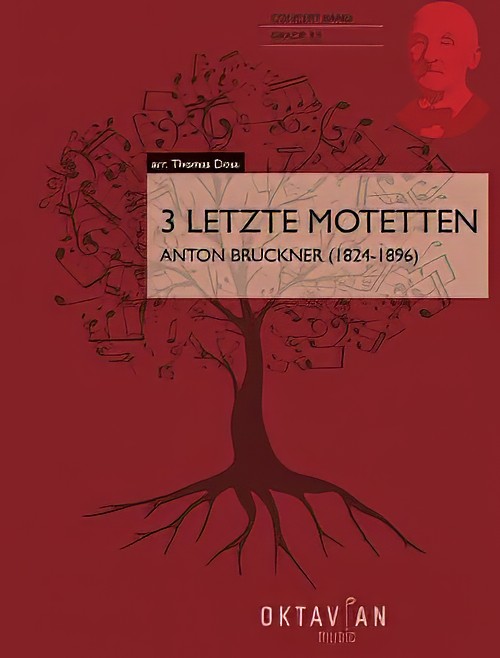 £123.20
£123.203 Letzte Motetten (Concert Band - Score and Parts) - Bruckner, Anton - Doss, Thomas
Anton Bruckner (b. 4.9.1824, Ansfelden, d. 11.10.1896, Vienna) didn't have it easy. Throughout his life, the Austrian composer was plagued by self-doubt. Anton Bruckner came from a simple, rural background. After the death of his father, he was accepted as a choirboy at the monastery of Sankt Florian in 1837. After several years as a school assistant and his own organ and piano studies, he first worked as organist in St. Florian, then from 1855 as cathedral organist in Linz. Introduced to music theory and instrumentation by Simon Sechter and Otto Kitzler, he discovered Richard Wagner as an artistic role model, whom he admired throughout his life and also visited several times in Bayreuth. In 1868 Anton Bruckner became professor of basso continuo, counterpoint and organ at the Vienna Conservatory; ten years later court organist; and in 1891 finally honorary doctor of the University of Vienna. He was considered an important organ virtuoso of his era, but had to wait a long time for recognition as a composer. It was not until Symphony No.7 in E major, composed between 1881 and 1883, with the famous Adagio written under the effects of Wagner's death, that he achieved the recognition he had hoped for, even if he was reluctant to accept it given his inclination towards scepticism and self-criticism. Anton Bruckner was a loner who did not want to follow a particular school or doctrine. He composed numerous sacred vocal works, such as his three masses, the Missa Solemnis in B flat minor (1854), the Te Deum (1881-84) and numerous motets. As a symphonic composer, he wrote a total of nine symphonies and many symphonic studies from 1863 onwards, tending to revise completed versions several times over. Bruckner's orchestral works were long considered unplayable, but in fact were merely exceptionally bold for the tonal language of their time, uniting traditions from Beethoven through Wagner to folk music, on the threshold between late Romanticism and Modernism. Anton Bruckner composed about 40 motets during his lifetime, the earliest a setting of Pange lingua around 1835, and the last, Vexilla regis, in 1892. Thomas Doss has compiled some of these motets in this volume for symphonic wind orchestra. These motets show many characteristics of personal expression, especially Bruckner's colourful harmony in the earlier works, which is in places aligned with Franz Schubert (changes between major and minor; and movements in thirds). Later works are characterised by many components which, in addition to the expanded stature of the movements, include above all a sense of the instrumentation as an outward phenomenon and the harmony as a compositional feature that works more internally. Some aspects of Bruckner's work are the result of his long period of study, which familiarised him not only with the tradition of his craft, but also gave him insights into the "modernity" of his time in such composers as Wagner, Liszt and Berlioz. From this developed his personal standpoint, which always pursues the connection between the old and the new.Duration: 14.00
Estimated dispatch 7-14 working days
-
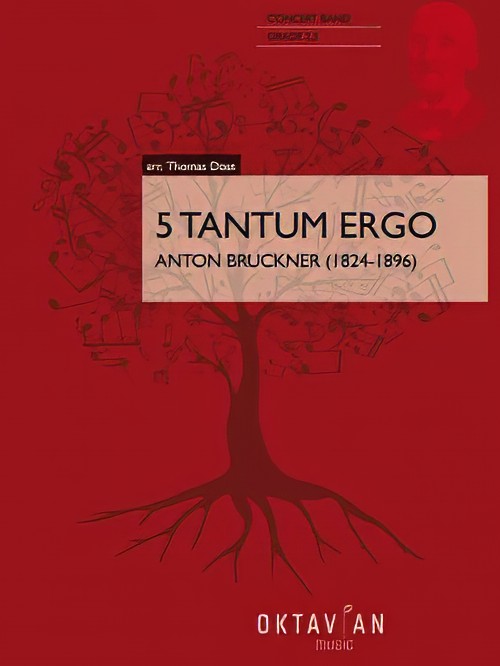 £95.99
£95.995 Tantum Ergo (Concert Band - Score and Parts) - Bruckner, Anton - Doss, Thomas
Anton Bruckner (b. 4.9.1824, Ansfelden, d. 11.10.1896, Vienna) didn't have it easy. Throughout his life, the Austrian composer was plagued by self-doubt. Anton Bruckner came from a simple, rural background. After the death of his father, he was accepted as a choirboy at the monastery of Sankt Florian in 1837. After several years as a school assistant and his own organ and piano studies, he first worked as organist in St. Florian, then from 1855 as cathedral organist in Linz. Introduced to music theory and instrumentation by Simon Sechter and Otto Kitzler, he discovered Richard Wagner as an artistic role model, whom he admired throughout his life and also visited several times in Bayreuth. In 1868 Anton Bruckner became professor of basso continuo, counterpoint and organ at the Vienna Conservatory; ten years later court organist; and in 1891 finally honorary doctor of the University of Vienna. He was considered an important organ virtuoso of his era, but had to wait a long time for recognition as a composer. It was not until Symphony No.7 in E major, composed between 1881 and 1883, with the famous Adagio written under the effects of Wagner's death, that he achieved the recognition he had hoped for, even if he was reluctant to accept it given his inclination towards scepticism and self-criticism. Anton Bruckner was a loner who did not want to follow a particular school or doctrine. He composed numerous sacred vocal works, such as his three masses, the Missa Solemnis in B flat minor (1854), the Te Deum (1881-84) and numerous motets. As a symphonic composer, he wrote a total of nine symphonies and many symphonic studies from 1863 onwards, tending to revise completed versions several times over. Bruckner's orchestral works were long considered unplayable, but in fact were merely exceptionally bold for the tonal language of their time, uniting traditions from Beethoven through Wagner to folk music, on the threshold between late Romanticism and Modernism. Hymns for four-part mixed choir a cappella (1846, St. Florian) No. 1 in E flat major (WAB 41/3): Quite Slow No. 2 in C major (WAB 41/4): Andante No. 3 in B flat major (WAB 41/1): Slow No. 4 in A flat major (WAB 41/2): Slow Hymn for five-part (SSATB) mixed choir and organ No. 5 in D major: Solemnly They are simple works, completely subordinate to their liturgical use, which nevertheless already show numerous characteristics of personal expression. These small pieces were able to stand up to the harsh scrutiny of the mature master: in 1888, Bruckner subjected them to a revision in which he made only minor corrections.Duration: 11.00
Estimated dispatch 7-14 working days
-
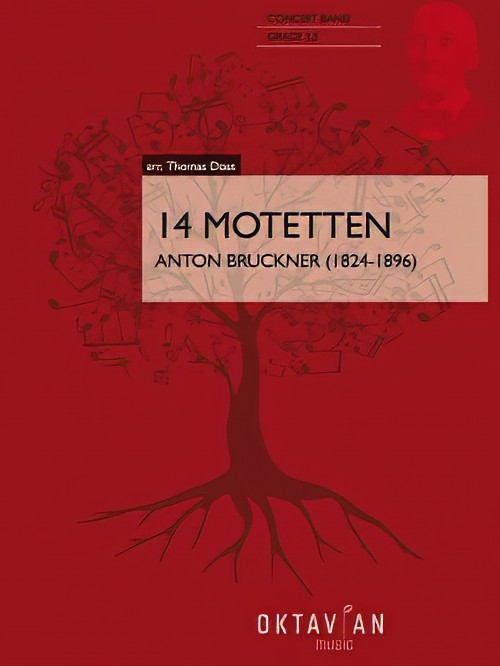 £256.00
£256.0014 Motetten (Concert Band - Score and Parts) - Bruckner, Anton - Doss, Thomas
Anton Bruckner (b. 4.9.1824, Ansfelden, d. 11.10.1896, Vienna) didn't have it easy. Throughout his life, the Austrian composer was plagued by self-doubt. Anton Bruckner came from a simple, rural background. After the death of his father, he was accepted as a choirboy at the monastery of Sankt Florian in 1837. After several years as a school assistant and his own organ and piano studies, he first worked as organist in St. Florian, then from 1855 as cathedral organist in Linz. Introduced to music theory and instrumentation by Simon Sechter and Otto Kitzler, he discovered Richard Wagner as an artistic role model, whom he admired throughout his life and also visited several times in Bayreuth. In 1868 Anton Bruckner became professor of basso continuo, counterpoint and organ at the Vienna Conservatory; ten years later court organist; and in 1891 finally honorary doctor of the University of Vienna. He was considered an important organ virtuoso of his era, but had to wait a long time for recognition as a composer. It was not until Symphony No.7 in E major, composed between 1881 and 1883, with the famous Adagio written under the effects of Wagner's death, that he achieved the recognition he had hoped for, even if he was reluctant to accept it given his inclination towards scepticism and self-criticism. Anton Bruckner was a loner who did not want to follow a particular school or doctrine. He composed numerous sacred vocal works, such as his three masses, the Missa Solemnis in B flat minor (1854), the Te Deum (1881-84) and numerous motets. As a symphonic composer, he wrote a total of nine symphonies and many symphonic studies from 1863 onwards, tending to revise completed versions several times over. Bruckner's orchestral works were long considered unplayable, but in fact were merely exceptionally bold for the tonal language of their time, uniting traditions from Beethoven through Wagner to folk music, on the threshold between late Romanticism and Modernism. Anton Bruckner composed about 40 motets during his lifetime, the earliest a setting of Pange lingua around 1835, and the last, Vexilla regis, in 1892. Thomas Doss has compiled some of these motets in this volume for symphonic wind orchestra. These motets show many characteristics of personal expression, especially Bruckner's colourful harmony in the earlier works, which is in places aligned with Franz Schubert (changes between major and minor; and movements in thirds). Later works are characterised by many components which, in addition to the expanded stature of the movements, include above all a sense of the instrumentation as an outward phenomenon and the harmony as a compositional feature that works more internally. Some aspects of Bruckner's work are the result of his long period of study, which familiarised him not only with the tradition of his craft, but also gave him insights into the modernity of his time in such composers as Wagner, Liszt and Berlioz. From this developed his personal standpoint, which always pursues the connection between the old and the new.Duration: 39.00
Estimated dispatch 7-14 working days
-
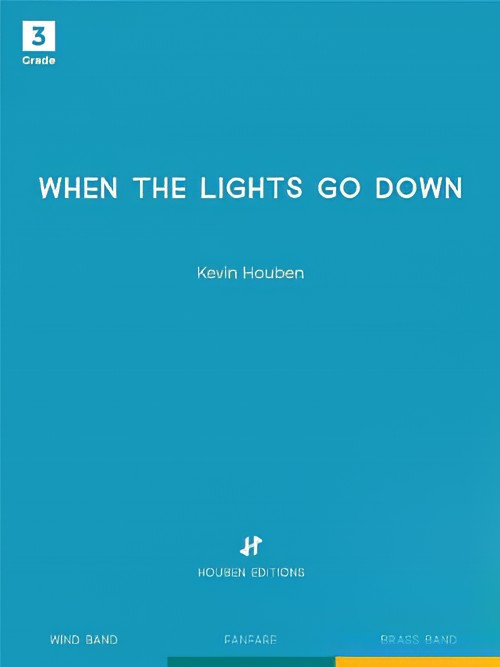 £109.60
£109.60When the Lights Go Down (Concert Band - Score and Parts) - Houben, Kevin
Kevin Houben created with When the Lights Go Down, a wonderful chorale that can be a moment of reflection in any concert program. The resigned, magnificent melodies at the beginning of this composition slowly build up to a highlight with an increasing orchestration. The piece starts with a suggestive Adagio Meditativo, after which the main theme is immediately announced. A central bridge section takes the listener along through the different spheres at which the melodic and rhythmic drums embellish the chorale melodies. Thematic elements from the introduction brings the piece to a quiet and peaceful end. The sheer simplicity with which this work is written, makes it a resplendent, magnificent concert piece. 'When the Lights Go Down', refers to a moment when time stand still for a while, stillness within and around yourself. Duration: 9.00
Estimated dispatch 7-14 working days
-
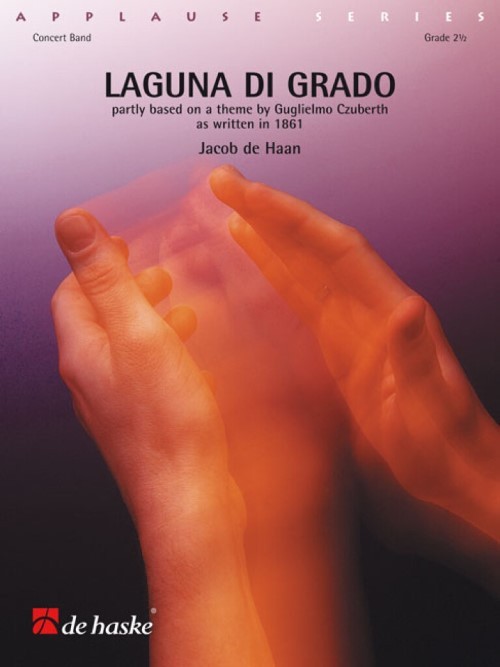 £84.99
£84.99Laguna di Grado (Concert Band - Score and Parts) - De Haan, Jacob
Picture yourself in the marvellous paradise of Italy's Grado Lagoon. The magnificent display of colour and the salty scent of sea air combine with the fragrant tamarisk to create a unique atmosphere. In this glorious haven time stands still - except for the flight of the seagulls and the slow flood tide. From a distance you hear an adagio coming through the air from a procession of boats. Its solemn tones dissipate into the landscape of the lagoon.Duration: 5:00
Estimated dispatch 7-14 working days
-
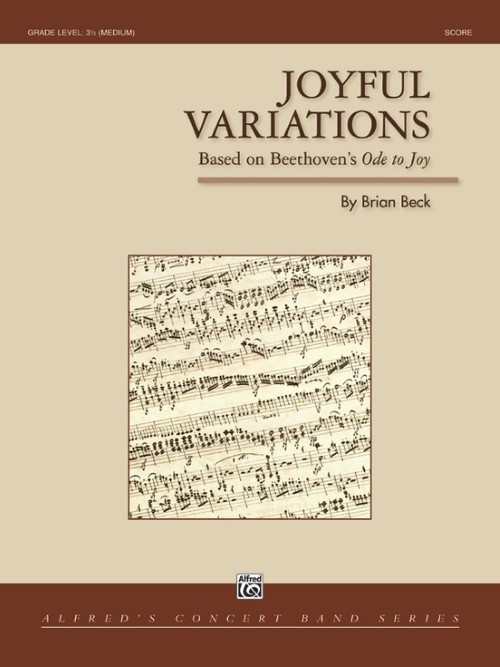 £77.50
£77.50Joyful Variations (Concert Band - Score and Parts) - Beck, Brian
Based on Beethoven's Ode to Joy. The grandeur and beauty of Joyful Variations takes the listener on a journey through one of the most famous melodies ever written, Beethoven's theme from Symphony No.9. Noble fanfares open and close these variations, set in ternary form, while sweeping renditions of the theme provide color and lyricism in a contrasting Adagio section. An excellent piece to open or close any concert! Duration: 5.00
Estimated dispatch 7-14 working days
-
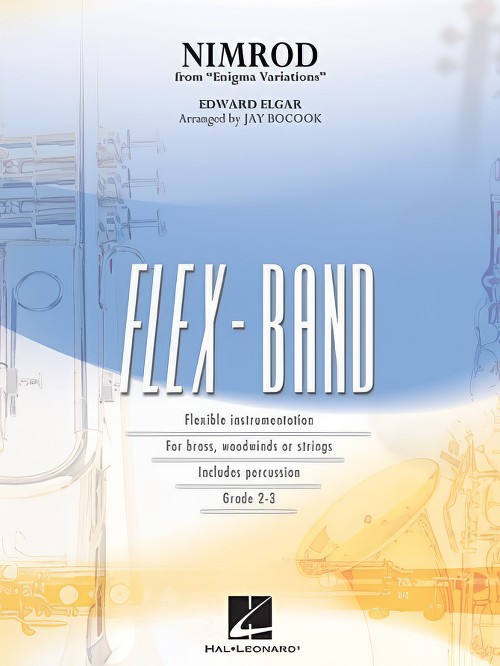 £57.50
£57.50Nimrod (from Enigma Variations) (Flexible Ensemble - Score and Parts) - Elgar, Edward - Bocook, Jay
This adagio movement from the Enigma Variations provides an excellent opportunity for developing bands to work on tone, blend, intonation, and dynamics. Jay Bocook's arrangement is designed for smaller bands and features flexible scoring options to fit most any ensemble.
Estimated dispatch 7-14 working days
-
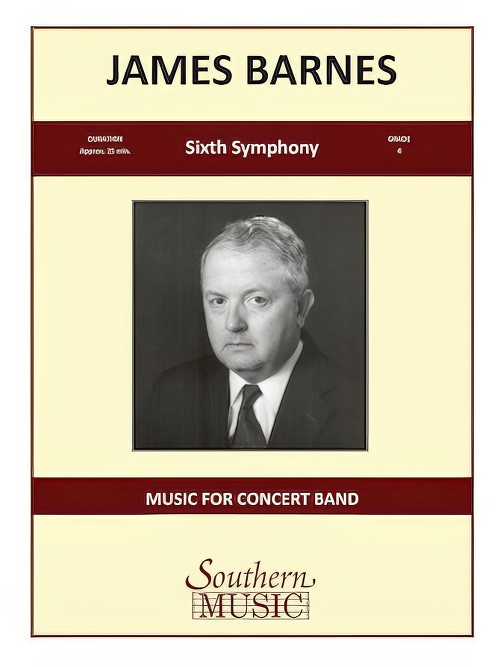 £279.99
£279.99Sixth Symphony (Concert Band - Score and Parts) - Barnes, James
This symphony, commissioned by and dedicated to Roy Holder and his wonderful Lake Braddock High School Band, is both shorter and simpler to play than the composer's other symphonies, but it loses nothing in terms of integrity or profundity. The first movement, "Andante, ma non troppo," casts a brooding mood in the somber key of D minor, the second movement, "Adagio" is lyrical, while the final movement, "Allegro energico," begins powerfully before moving to a dreamy, ghost-like middle section before finally returning to the initial material. Duration: 25.00
Estimated dispatch 7-14 working days
